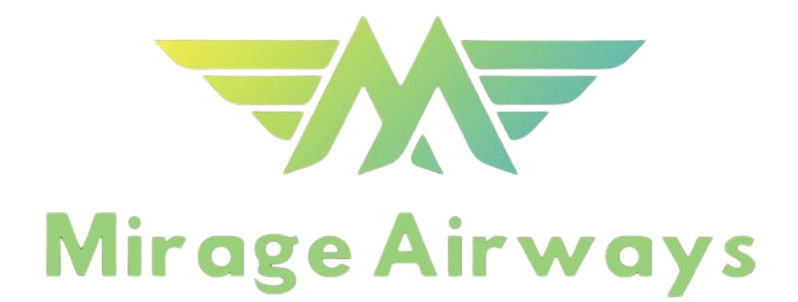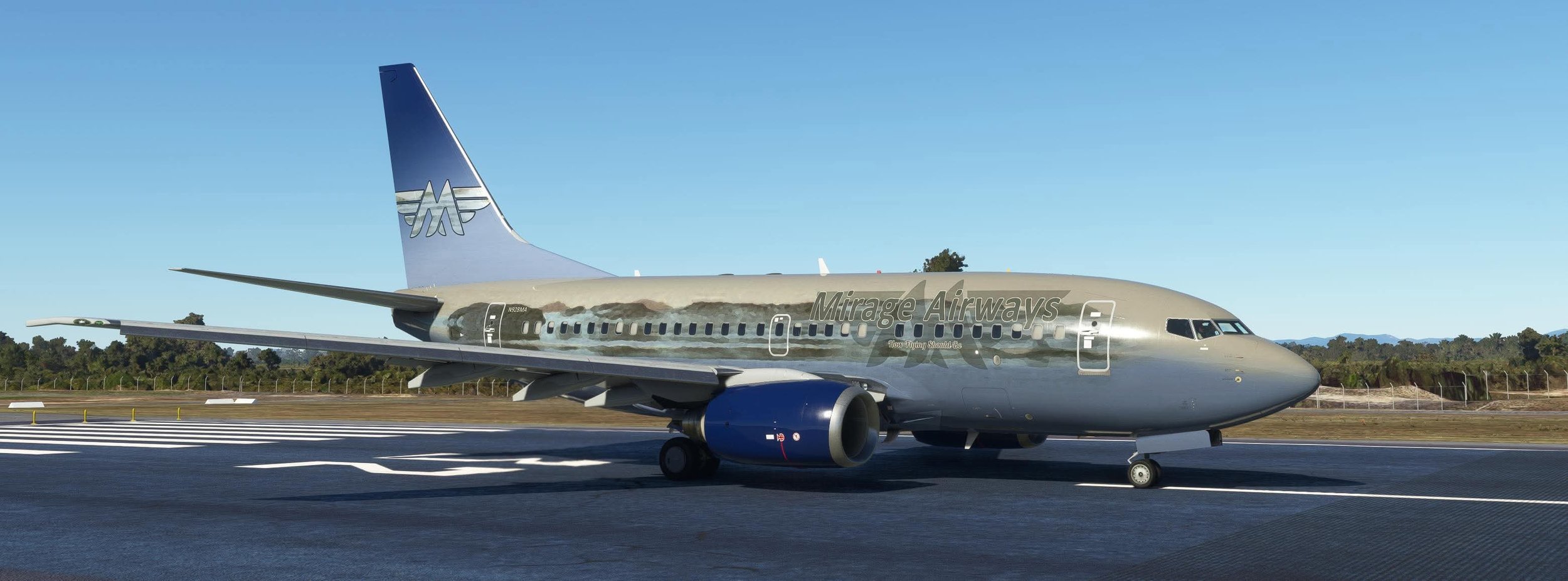
PMDG 737-600 - Our Workhorse, The Boeing 737-600 is the smallest member of the 737 Next Generation (NG) family. It's a short-to-medium-range airliner with a capacity of 110-132 passengers, and is similar in size to the 737 Classic -500. Key specifications include a wingspan of 34.32 meters, a length of 31.27 meters, and a height of 12.57 meters. It's powered by two CFM56-7B turbofan engines. The 737-600's maximum takeoff weight is 65,544 kg, and it can reach a maximum altitude of 41,000 feet (12,497 meters). The Boeing 737-600 has a maximum range of 3,050 nautical miles (5,648 kilometers or 3,510 miles),

PMDG 737-800 - The Boeing 737-800 is a popular narrow-body airliner known for its fuel efficiency and passenger capacity. It typically seats between 162 and 189 passengers, with a range of approximately 3,000 nautical miles.
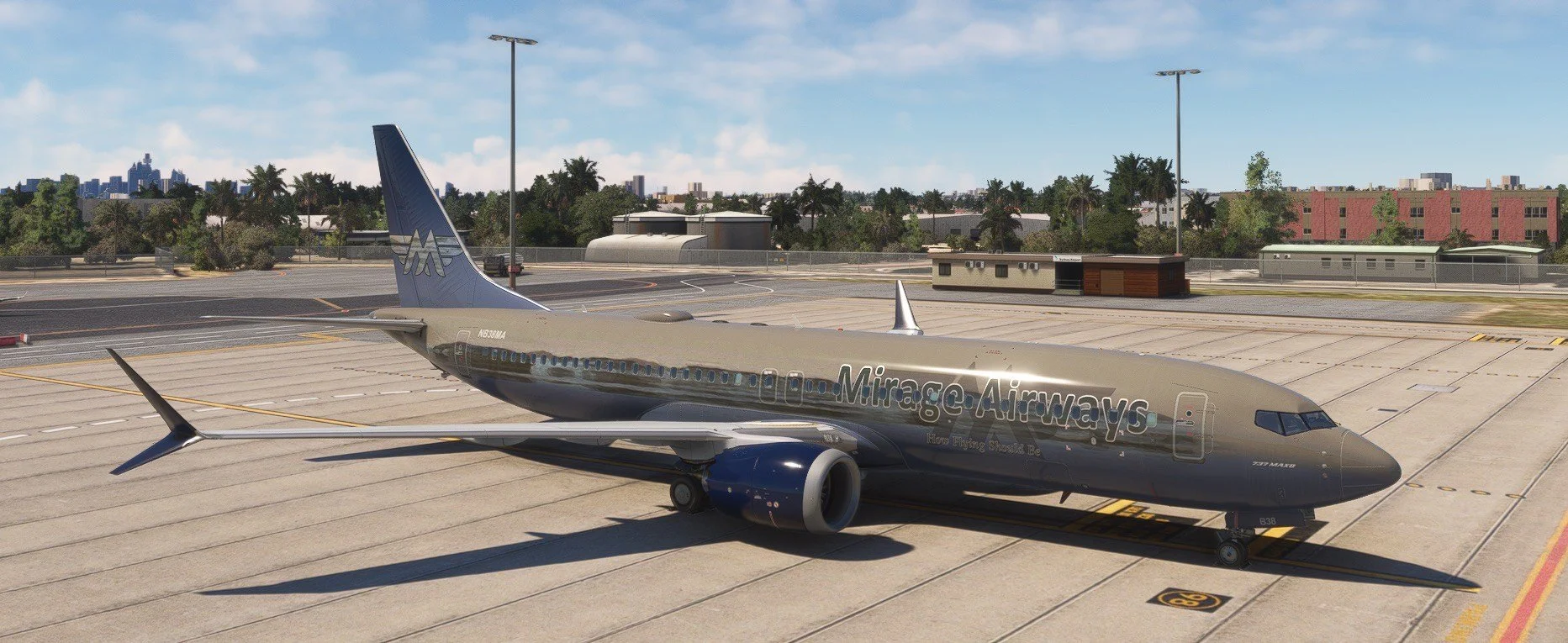
iFLY 737 MAX-8/8200 - The Boeing 737 MAX 8 is a narrow-body airliner known for its fuel efficiency and updated technology. It typically carries between 162 and 210 passengers, depending on the configuration, with a range of up to 3,550 nautical miles. Its
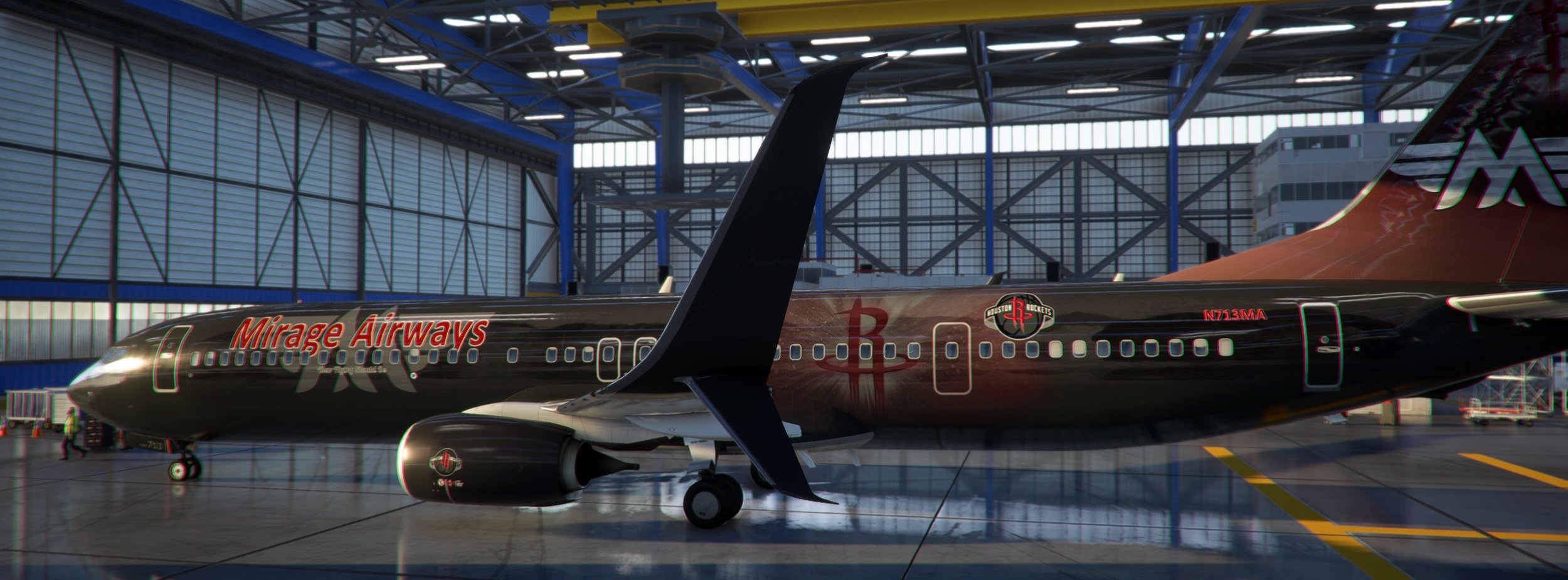
PMDG 737-900ER - The Boeing 737-900ER is a member of the 737 Next Generation family, offering increased capacity and range compared to the standard 737-900. It features a longer fuselage, an additional pair of exit doors, and enhanced wing and tail designs. The Boeing 737-900ER has a range of 3,200 nautical miles (5,900 km). This extended range is achieved through several aerodynamic and structural design enhancements, including reinforced wings, a two-position tailskid, and optional blended winglets,

PMDG 777-200ER - The Boeing 777-200ER has a maximum range of 7,065 nautical miles (13,080 km). It can typically carry between 301 and 313 passengers in a three-class configuration. The 777-200ER is known for its extended range capabilities, making it suitable for long-haul flights.

PMDG 777-300ER - The Boeing 777-300ER is a long-range, wide-body airliner, known for its extended range and high capacity. It's the best-selling variant of the 777 family, featuring raked and extended wingtips, a strengthened fuselage and wings, and modified main landing gear for enhanced performance. The 777-300ER is powered by two General Electric GE90-115B turbofan engines, the most powerful ever fitted to a commercial airliner. The Boeing 777-300ER has a maximum range of 7,370 nautical miles (13,650 km; 8,480 mi),

KURO 787-8 The Boeing 787-8, also known as the Dreamliner, has a range of 7,305 nautical miles (13,530 kilometers). It's the shortest variant of the 787 family and can typically seat 248 passengers in a two-class configuration, according to The Boeing Company

HorizonSim 787-9 The Boeing 787-9 Dreamliner has a range of approximately 7,565 nautical miles (14,010 kilometers). This makes it a popular choice for long-haul flights. Typically accommodates 296 passengers in a two-class configuration.
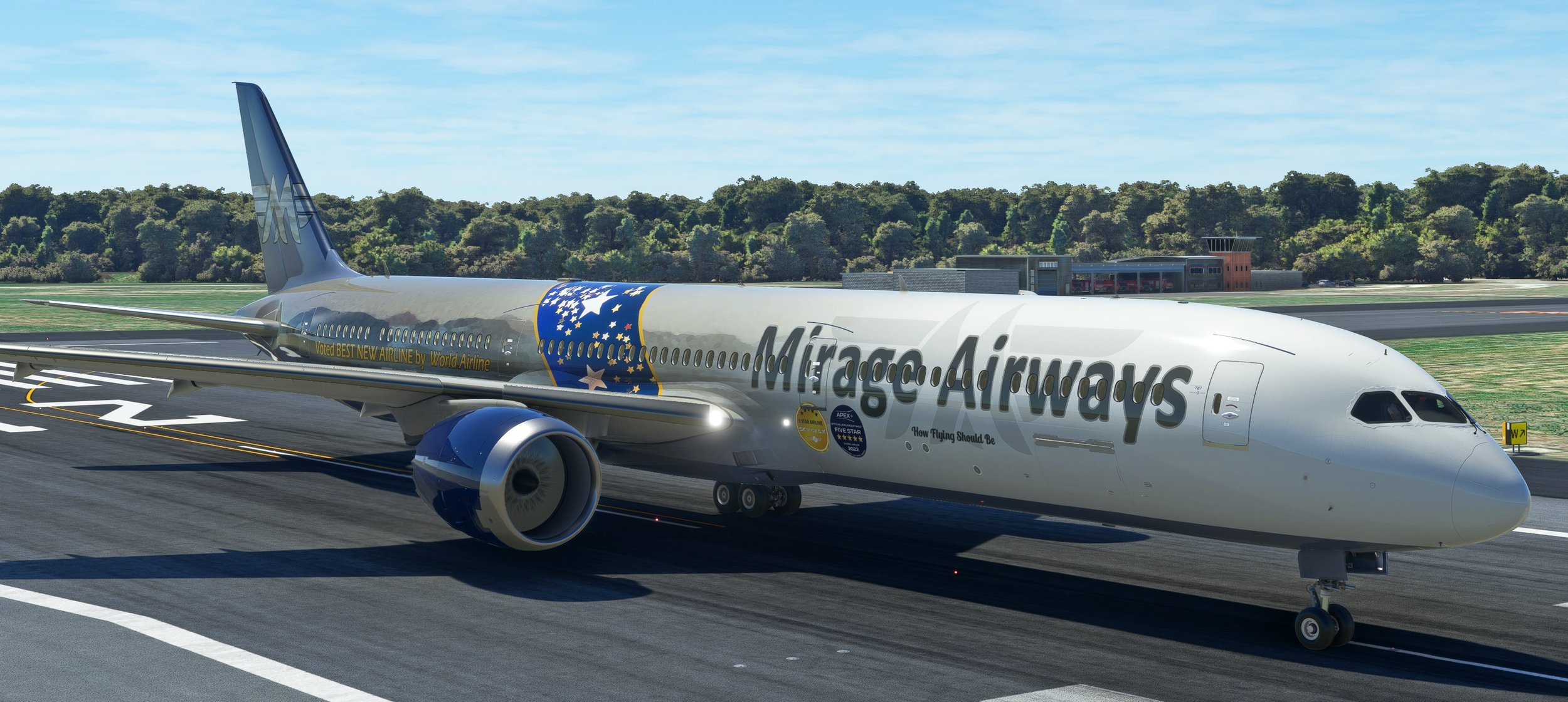
787-10 The Boeing 787-10 has a range of 6,430 nautical miles (11,908 kilometers or 7,284 miles). This variant is the longest of the 787 family, but it also has the shortest range compared to the 787-8 and 787-9.
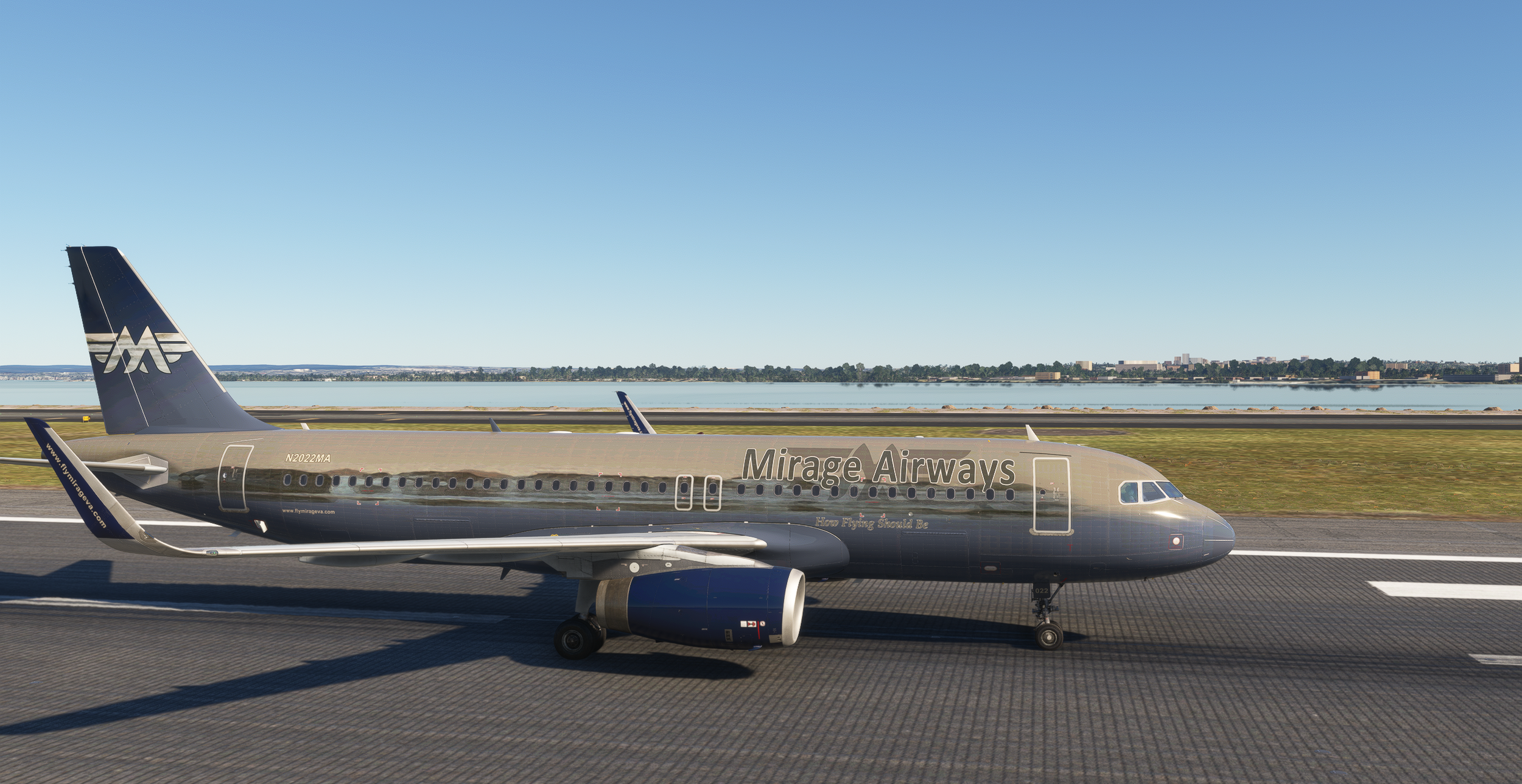
Airbus A320 - 200 - The Airbus A320-200 is a popular single-aisle, twin-engine jet airliner, known for its efficiency and wide single-aisle cabin. It's a workhorse for many airlines, offering a comfortable passenger experience with features like in-seat power and entertainment options. The Airbus A320-200 typically has a range of around 3,300 nautical miles.
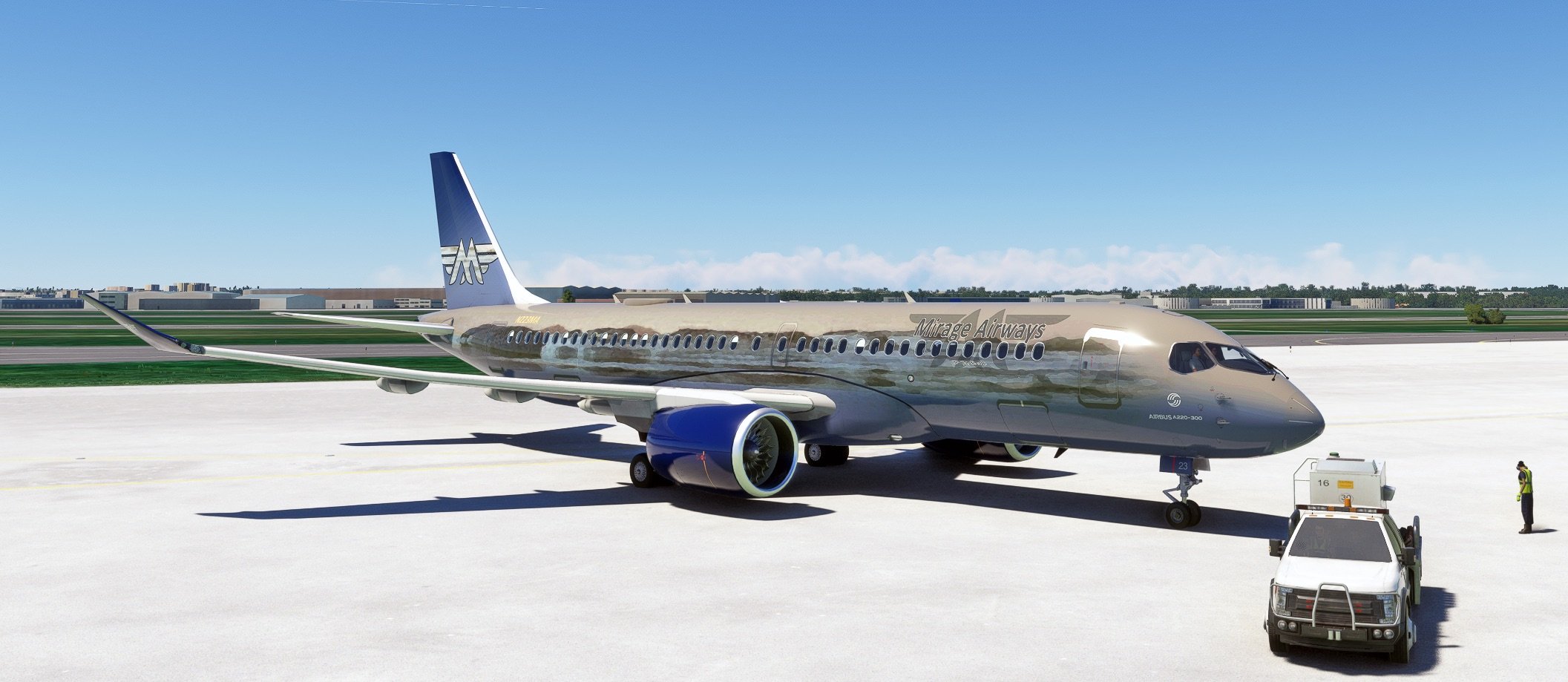
A220-300 The A220 was designed with one goal in mind, savings for operators. With 25% lower operating cost per seat compared to previous generation aircraft, the A220's clean-sheet design has delivered an efficient, versatile and profitable aircraft for operators. The Airbus A220-300 has a range of 6,297 km (3,400 nautical miles).

Inibuilds A350-900 - The A350 is known for its efficiency and passenger comfort, even on long flights. It incorporates advanced features like wing morphing technology and Rolls-Royce Trent XWB engines to minimize fuel burn and emissions. The A350 has a wider fuselage than previous Airbus models, allowing for greater cabin space and passenger comfort. Airbus A350-900: Range: Typically flies up to 15,000 kilometres (8,100 nautical miles).

E175 The Embraer 175 has a range of 2,200 nautical miles (2,532 statute miles, 4,074 kilometers). This range allows for flexible seat configurations and is designed for short to mid-range flights. The E175 can be configured for dual-class (76 seats) or single-class (78 or 88 seats).

Tecnam P2012 The Tecnam P2012 Traveller has a maximum range of 950 NM (1760 km). It also has a cruise speed of up to 194 kts (359 km/h), according to Tecnam. The P2012 STOL variant has a slightly increased range of 1,100 nautical miles (2,037 km)

CARENADO/SWS PC12NGX The Pilatus PC-12 NGX has a maximum cruise speed of 290 KTAS (knots true airspeed), a maximum range of 1,803 nm (nautical miles), and a service ceiling of 30,000 feet. It also has a takeoff distance of 2,485 feet over a 50-foot obstacle and a landing distance of 2,170 feet over a 50-foot obstacle. The aircraft can carry a maximum of 9 passengers.

TWIN OTTER The de Havilland Canada DHC-6 Twin Otter, also known as the Twin Otter, has a maximum range of approximately 871 nm (1,613 km) with no payload, or 803 nm (1,487 km) with a 2,270 lb payload
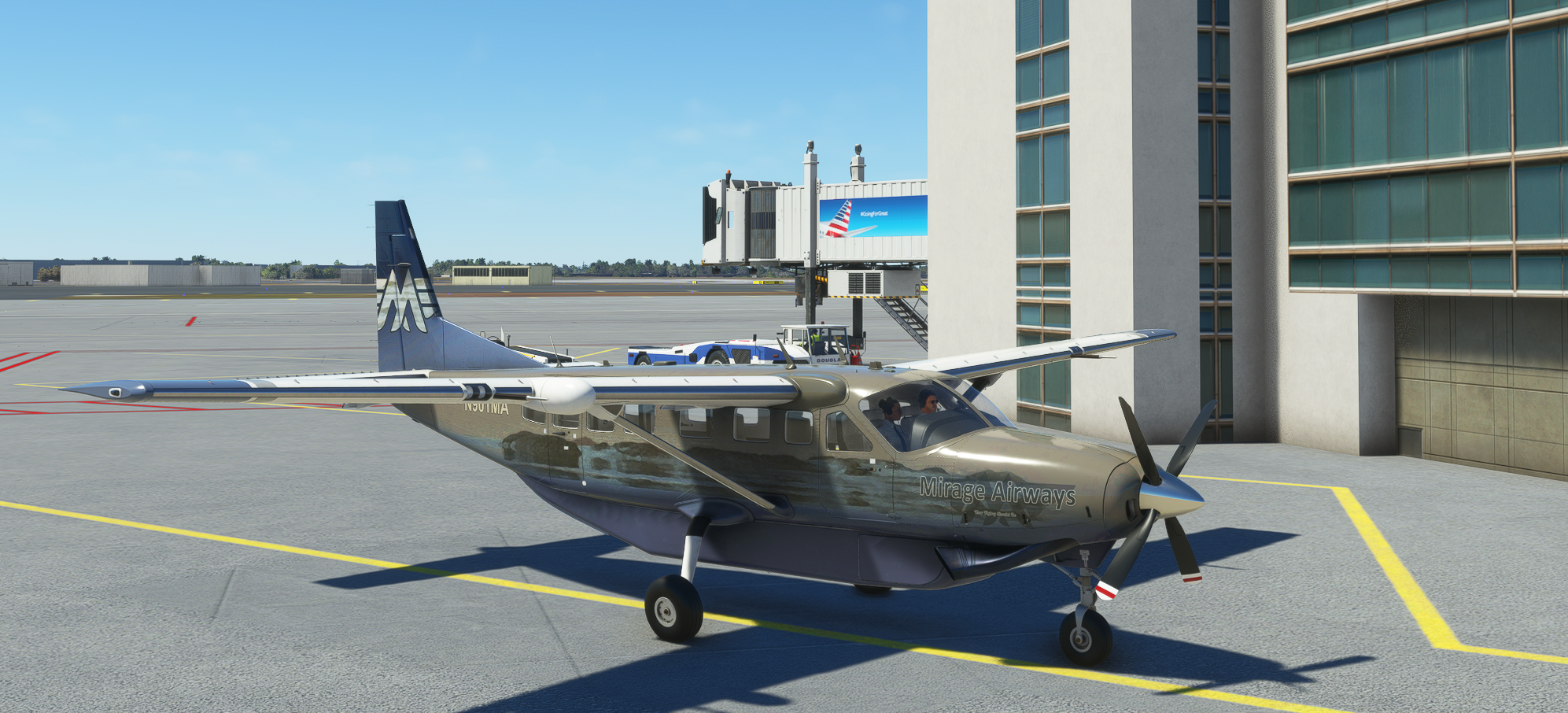
Cessna caravan The Cessna 208B Grand Caravan has a maximum range of 912 nm (1,689 km). This is with the Grand Caravan EX version. It can carry a maximum of 14 occupants with an optional cargo pod according to AOPA. The maximum cruise speed is 185 ktas (343 km/h)

Beechcraft king air 350I/analog The Beechcraft King Air 350i has a range of 1,806 nautical miles (2,078 miles). This allows for non-stop flights between major city pairs and provides flexibility for various missions. It also boasts a maximum cruise speed of 312 knots (359 mph) and a service ceiling of 35,000 feet. Typically configured for 8 passengers
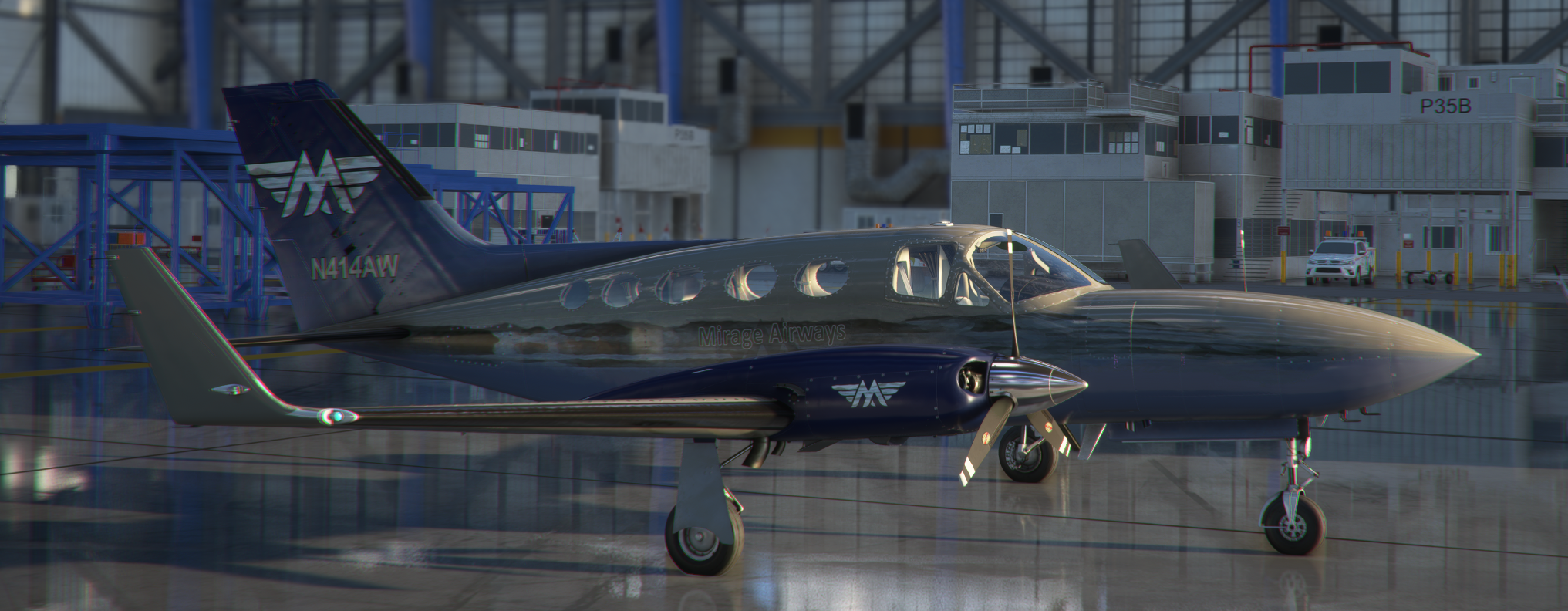
Cessna 414 - The Cessna 414 has a maximum range of approximately 1,328 nautical miles (1,528 statute miles). This is achieved with maximum fuel capacity and at optimal altitudes and power settings.
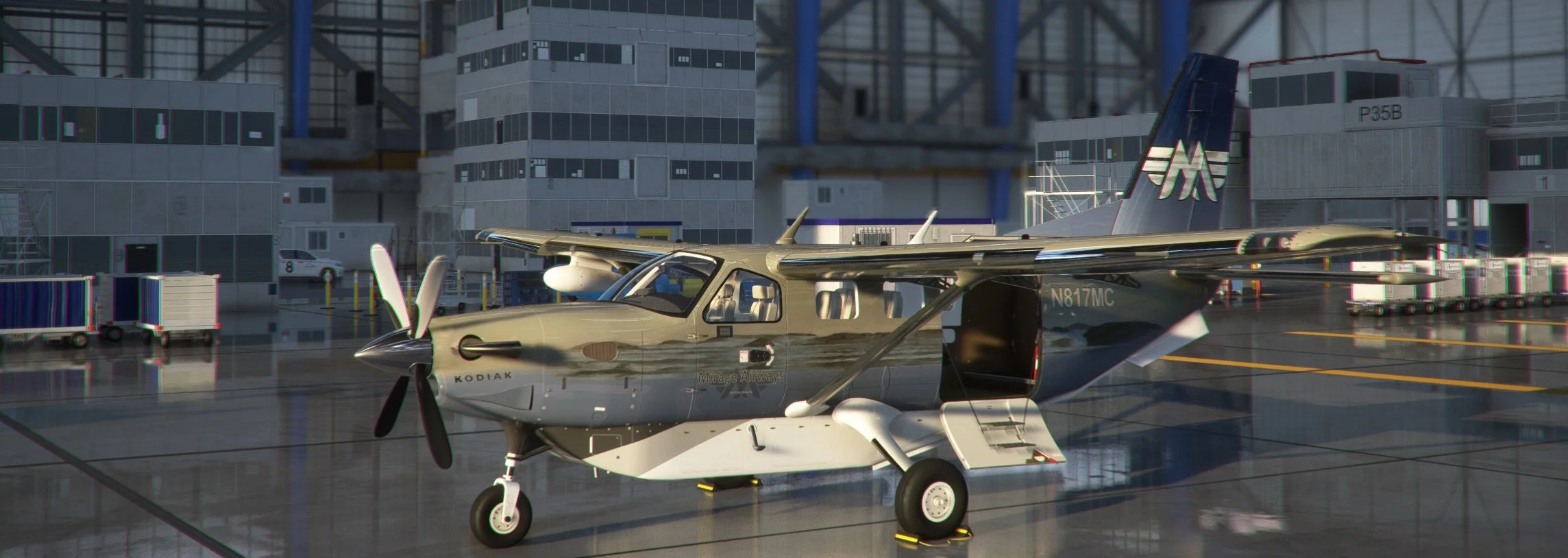
Kodiak quest 100 The Kodiak 100 has a maximum range of 1,132 nautical miles (2,096 km) when flying at 135 knots true airspeed (KTAS) at 12,000 feet, according to Altivation Aircraft and Globalair.com. This range assumes a 45-minute fuel reserve. According to Aviation Week, the Kodiak 100 can achieve a maximum range of 1,132 nm at 135 KTAS, while the Kodiak 900 can reach 1,129 nm at 156 KTAS. The Kodiak 100 also boasts a cruise speed of 183 KTAS and a fuel consumption rate of 48 gallons per hour. Meet The Kodiak Advanced STOL Turboprop With every measure of performance, the Kodiak 100 is in a class of its own. * Max speed 183 KTAS. * Extended Range 1132 NM. * Fue... Kodiak.aero KODIAK 100 Specifications, Performance, and Range Operating Weights. Max T/O Weight : 7255 Lb. Max Landing Weight : 6690 Lb. Empty Weight : 3775 Lb. Fuel Capacity : 320 gal Lb. Pay... Globalair.com Daher Kodiak 100 Specifications - Altivation Aircraft Altivation Aircraft - Show all
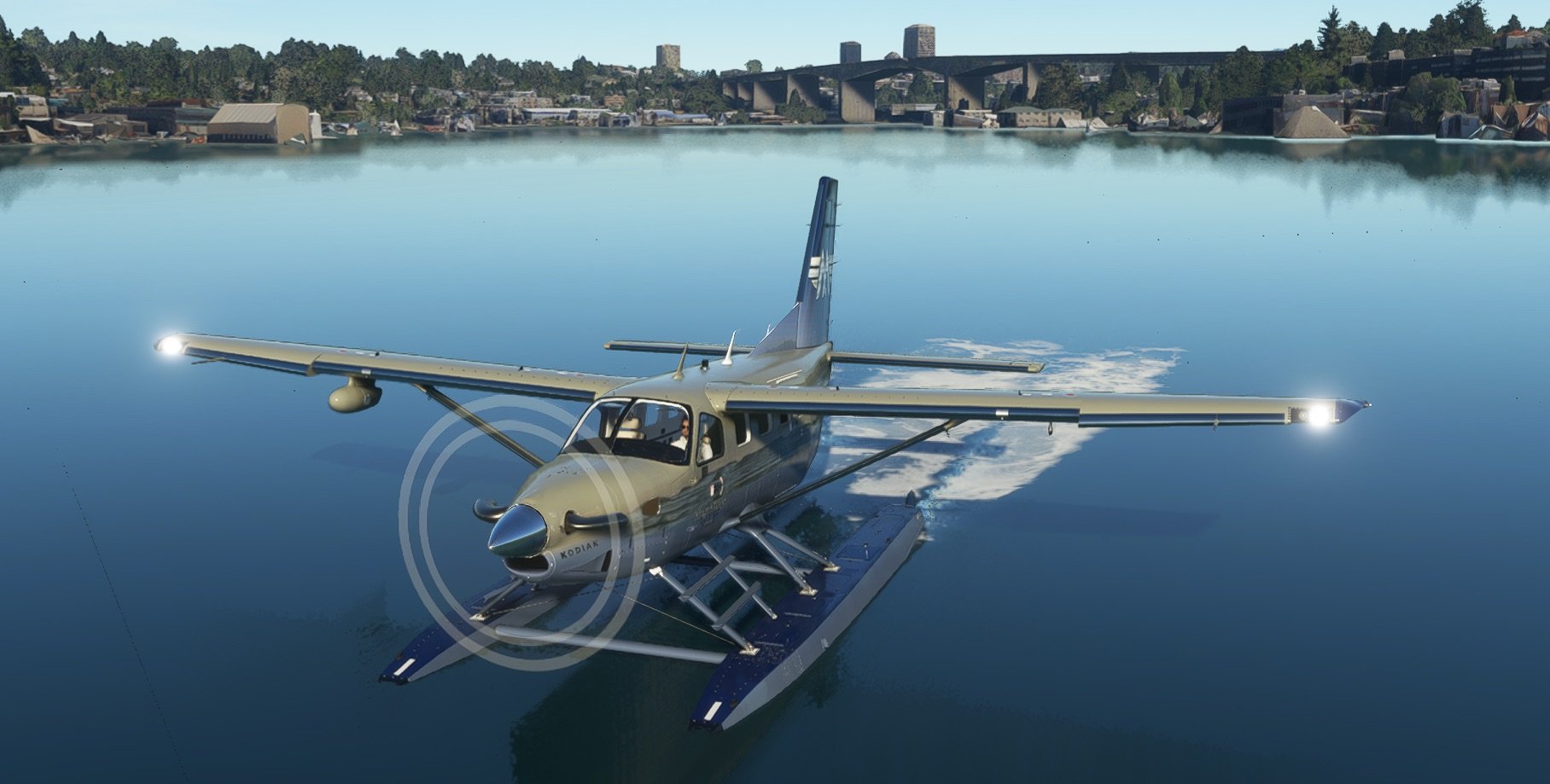
Kodiak quest 100 Floats The Kodiak 100 with floats has a maximum range of 1,132 nautical miles (nm) when configured for maximum range cruise at 135 knots indicated airspeed (KTAS) at 12,000 feet, according to Quest Aircraft and Aviation International News. This configuration also allows for an 8.4-hour flight with a 45-minute reserve, consuming 271 gallons of fuel, says Aviation International News. At a higher speed of 174 KTAS, the range decreases to 1,005 nm, according to Quest Aircraft.
